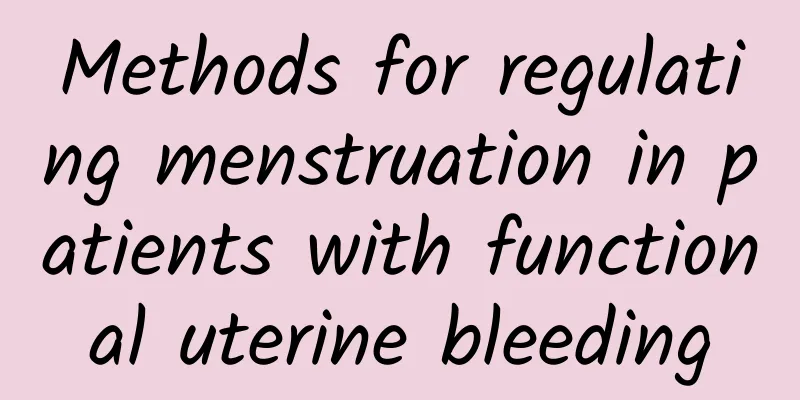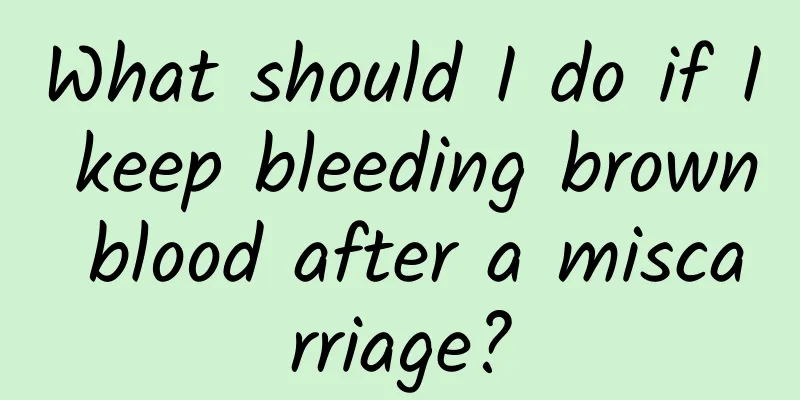Methods for regulating menstruation in patients with functional uterine bleeding

|
The cycle regulation of patients with functional uterine bleeding is based on hemostasis treatment, simulating the rhythm of reproductive hormones, and using artificial cycle therapy with estrogen-progesterone to promote the cyclical development and shedding of the endometrium and improve the feedback function of the HPO axis. Rebound ovulation and restoration of regular menstruation may occur after drug discontinuation. Full cycle therapy 1. Estrogen-progesterone sequential therapy: Applicable to adolescent functional uterine bleeding. Take diethylstilbestrol 0.5-1.0 mg/d x 20-22 days starting from the fifth day of the menstrual cycle. Take 8-10 mg/d of medroxyprogesterone for the next 10 days, or inject progesterone 20 mg/d for the next 5 days. Three cycles constitute one course of treatment. 2. Estrogen-progestin combined therapy: Suitable for women of childbearing age and menopausal women with functional uterine bleeding, excessive endometrial hyperplasia, and menorrhagia. Oral contraceptive pills No. Ⅰ or No. Ⅱ are taken orally from the fifth day of the menstrual cycle, 1 tablet/dX22 days, for a total of 3 cycles. (Metronidazole 4mg + diethylstilbestrol 0.5mg)/d, or (norethindrone 2.5mg + diethylstilbestrol 0.5mg)/dX20-22 days, for a total of 3 cycles. 3. Progestin therapy: norethindrone 2.5-5.0 mg/d; or megestrol acetate, medroxyprogesterone acetate 4-8 mg/d; or chlormadinone acetate 12 mg/dX20-22 days. 3 cycles in total. 4. Progestogen-androgen therapy: On the basis of progestogen therapy, 5-10 mg of methyltestosterone is added orally every day to enhance the inhibitory effect on the HPOU axis. Second half cycle therapy It is limited to regulating the cycle, assisting the corpus luteum, and controlling bleeding by taking estrogen-progesterone orally or intramuscularly every day from the 15th to the 24th day of the menstrual cycle (the second half of the cycle) for a total of 10 days. The drugs include: oral contraceptives No. Ⅰ or No. Ⅱ tablets (full or half tablets)/d; norethindrone 2.5-5.0 mg, or (megestrol acetate, medroxyprogesterone acetate 6-8 mg + diethylstilbestrol 0.25-0.5 mg)/d; compound progesterone 1 vial/dX5-7 days. |
<<: What causes uterine fibroids?
>>: How do you know if you have an ovarian cyst?
Recommend
How long after a miscarriage can you take a shower? Learn more
Now that living conditions have improved, the fac...
Is endometriosis serious?
The normal development of the uterus is closely r...
Exercise has been proven to reduce psychological burden ~ Remember these 4 principles to get rid of depression
The results of a cross-sectional study of more th...
What are the symptoms of left ovarian cysts and what medicines can be used to treat them?
Left ovarian cyst is a common benign tumor of the...
Why does vaginal discharge smell bad?
The odor of vaginal discharge is caused by vagina...
Does chocolate cyst affect fertility?
Does chocolate cyst affect fertility? 1. Chocolat...
Can I get pregnant if I have cervicitis? What should I know about the impact of cervicitis on the baby?
Being a mother is undoubtedly the happiest and mo...
Depressed women are more likely to develop uterine fibroids
Many female friends do not know enough about uter...
Four dietary methods to help you solve dysmenorrhea
Dysmenorrhea refers to pain in the lower abdomen ...
Brief analysis of several common symptoms of tuberculous pelvic inflammatory disease
It is very necessary for female friends to unders...
What are the symptoms of worsening uterine fibroids in women?
We all need to understand the symptoms of worseni...
Why do you get uterine fibroids? How to treat uterine fibroids?
Many women do not know what uterine fibroids are....
What is a good diet for bacterial vaginosis?
Diet is very important for patients, and the same...
What causes cervical precancerous lesions?
How are cervical precancerous lesions caused? In ...
How much bleeding is normal during ovulation?
How much bleeding is normal during ovulation? 1. ...









